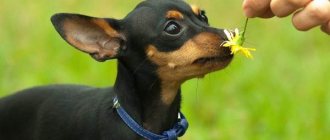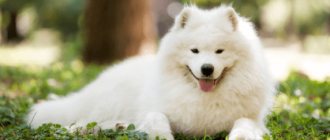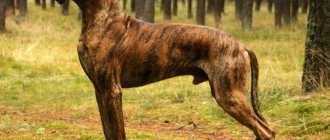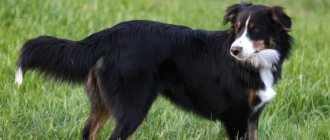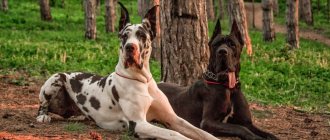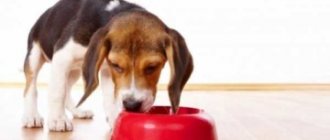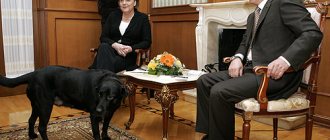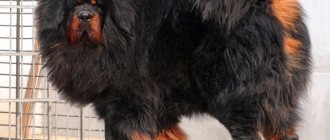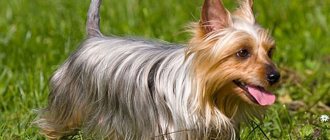History of the Basset Hound Breed
Basset Hound
Officially, the Basset Hound is considered an English breed, but the homeland of its ancestors was still France. Since the Middle Ages, in the books and manuscripts of French historians, notes began to appear about squat dogs from the Artesian-Norman hound tribe, used for burrow hunting and searching for truffles. In written sources, the animals appeared under the name basset hounds and were depicted as short-legged dogs with massive bones. By the way, the characteristic short stature inherent in all modern representatives of this family was an elementary mutation, subsequently artificially fixed by breeders.
In the 17th century, basset breeding in France became widespread, as a result of which the breed expanded its list of “qualifications.” Now with short-legged dogs they went not only to hunt burrowing animals, but also to hunt pheasants. It is clear that this was mainly a hunt on foot, since Bassets simply would not have been able to keep up with a horse, but they were excellent at wading through the thickets and diving under dead trees for prey. Around this stage, the stratification of the family of short greyhounds began. As a result: by the 18th century, in French kennels it was possible to find 12 basset lines with different external and performance characteristics, some of which later “merged” into the so-called artesian-Norman type.
The English stage of the formation of the breed began in the 19th century, when the Artesian-Norman Basset crossed the English Channel. In Shakespeare’s homeland, they immediately added “national flavor” to the animals by mating them with bloodhounds, which gave the dogs solidity and slight “folding” to their bodies, and their ears an impressive length. The offspring resulting from the cross were called Basset Hounds, and were presented at the Paris Exhibition in 1863.
About 20 years after the official announcement, Basset Hounds had their own club, and in 1887 they finally separated from other types of Basset Hounds through a standardization procedure. At the end of the 19th century, the breed was already well known in America, while these sad short-legged dogs appeared in Russian nurseries only in the late 70s of the 20th century.
History of the breed
History of the breed. The name of the breed itself comes from two words: “buss” - bottom, and “hound” - hound dog, that is, in other words, “low hound”. The theory of the origin of this breed is also very interesting. Two countries took part in the formation: France and England. Most dog experts are inclined to think that the basis for the creation of a new branch was the Norman French hounds, which have “good character and good looks.”
Until the middle of the last century, basset hounds were not distinguished as a separate breed; they were simply “non-standard” hounds taken from the general population with short stature, crooked paws and ears dragging on the ground, which specialized in burrow hunting for foxes and hares.
This situation might never have been resolved until Count Lecoutet and Mr. Lan drew attention to these dogs. They created two types of breed: "Lekuta Bassets" - small, squat dogs with slightly crooked paws, and "Lana Bassets" - massive and large animals with large heads and ears.
Both of these varieties were officially brought to England in 1866, when Lord Galway was given a magnificent pair of Basset Hounds as a gift; they later produced excellent offspring and became the founders of the English branch of the breed. But the British were not limited to what they got and then began experiments on mixing Basset Hounds with Bloodhounds, in the desire to enhance the main characteristics of the animal: folds on the skin, the shape of the head and large trailing ears.
Basset Hound breed standard
Basset hound puppy
A basset hound stretched out on a rug gives the impression of a hulking woolly caterpillar, in which it is difficult to suspect a hunter. Nevertheless, the dog is perfectly adapted to chasing prey in rough terrain: Basset hounds’ short legs easily overcome the “traps” of uneven terrain, which other types of hounds cannot do.
The mournful expression of the muzzle, characteristic of representatives of this breed, is their exclusive exterior highlight. The Basset Hound can be peaceful, enthusiastic, angry, but all these mood changes will be accompanied by a single sad face.
One cannot ignore the long ears of the breed, hanging almost to the ground, reminiscent of drooping wings. When a Basset has gained sufficient speed, they flutter under the pressure of the wind, creating the illusion that the dog is about to take off.
The height of the Basset Hound at the withers, according to the standard, should be 33-38 cm. Dogs weigh from 18 to 29 kg.
Head
The Basset Hound's head is dome-shaped with a distinctly prominent nape, massive muzzle and moderate stop. The offended-sad expression of the muzzle, characteristic of the breed, is achieved due to elastic skin, forming small wrinkles under the eyes and at the eyebrows. In addition, dogs are characterized by quilling, when the lower jaw is blocked by a freely hanging upper lip.
Teeth and bite
Hey! Give me back my ball!
The Basset Hound's teeth are strong, white, and set in a regular scissor bite.
Nose
Basset Hounds have prominent nostrils: large, wide open, often protruding beyond the line of the lips. The preferred color of the lobe is black, although brown and liver options are acceptable for animals with light fur.
Eyes
The Basset Hound's eyes are distinguished by their shallow set, oval shape and distinctly melancholy expression. Individuals with a dark brown shade of the iris are considered the reference, but for light-colored dogs a medium-brown tone is possible. A strict no to yellow and light brown eyes.
Ears
The Basset Hound's long, folded ears are set below eye level and hang down along the neck. The ear linen is thin to the touch and velvety.
Basset hound ears
Neck
The dog's elongated, thick neck has a distinct bend in the top line and a pronounced dewlap.
Frame
The body is elongated, voluminous, muscular, with a wide back and withers and croup located on the same line. The Basset Hound's chest is harmoniously developed, not narrow, and moderately deep. The belly line should be sufficiently tucked so as not to interfere with the animal when running.
Limbs
Basset hound paws
The dog's front legs are short, thick, with strong bones and small folds in the lower part. The shoulder blades are set at an angle of 45°, providing good reach in motion. Forearms slightly close at the top, but not interfering with the stride. Hind legs with fleshy thighs, good hocks and short, slightly wrinkled metatarsals. In addition, the Basset Hound has massive, arched paws, “set” on large pads. The breed moves smoothly, thanks to the good reach of the front legs and the springy push of the hind legs.
Tail
The strong, long tail of the Basset Hound has a slight bend without obvious curl (saber shape). A moving dog has its tail up.
Wool
The short body of the Basset Hound tightly covers the body without forming fringes.
Color
Theoretically, Basset Hounds can have any hound-like colors. In reality, dogs are most often tri-colored (for example, black and white with tan) and bi-colored (red and white).
Disqualifying faults
Basset hounds with developmental defects that call into question their breed are banned from participating in exhibitions and dog shows. For example, if a dog is oversized (above 38 cm), has long hair, or has a clear kozinets (protruding wrist joint), this is enough to exclude it from the list of competitors.
Basset hound photo
Basset Hound Personality
Basset Hound with a child
The Basset Hound, despite its amusing, distinctly clumsy appearance, is still a tricky dog, both in terms of physiology and intellectual indicators. Proud and proud, he not only reacts painfully to criticism and infringement of personal rights, but is also capable of developing and then putting into action a plan of small revenge on the one who angered him, so if one day you find a suspicious stain or pile on your favorite carpet, do not rush to be indignant . It is quite possible that the basset hound planted a pig on you to make up for yesterday's insult.
Representatives of this breed have their own views on life, which does not prevent them from being on good terms with their owners. Don't look at the sad face forever stuck to the dog's face. Inside, Basset Hounds are sociable and very cheerful creatures. For example, in a home environment, a dog behaves like a typical sybarite: it stuffs its belly with treats until it swells like a bubble, lies on the sofas, wrapped in its ears, and hangs around its owner’s feet, waiting for affection. In general, with all his appearance he shows that he knows a lot about pleasure.
As befits a real hound, the Basset Hound is absolutely not aggressive. Of course, if you try, you can throw any dog off balance, but in general the breed will not grumble or bite. Moreover, the Basset Hound can tolerate other dogs and, much less often, cats. Naturally, no one will force patience to be applied to all animals without the exception of the Basset Hound. But if you introduce the “eared dog” to other representatives of the domestic fauna in advance, he will not terrorize them either.
Representatives of this breed categorically do not want to give up their favorite habits, preferring, as a compromise, to change the lifestyle of their owners. For example, all basset hounds are tightly “wired” for comfort, so if the pet has chosen a specific place in the apartment, it is almost impossible to move its refuge to another part of the home. Dogs are also not happy about solitude and loneliness, so if for some reason you didn’t take your basset hound with you, but he really wanted to, get ready for minor mischief. Eared cats love to lie on sofas, from the first months of life they almost reflexively climb onto the owner’s bed. Moreover, a secret passion for soft feather beds persists even among those individuals who, it would seem, have been weaned from this habit. Left the house for an hour? You can be sure that the basset hound will not miss the opportunity to use your absence to his advantage and relax on your own bed.
Basset hound with a cat
Dog character and temperament
By nature, Basset Hounds are very gentle, sensitive, friendly, affectionate and good-natured animals. Such a dog has aristocratic features, which gives him some charm and charm. Basic qualities of a Basset Hound:
- Phlegm. If you need to show your pet in all its glory at an exhibition, then it will behave very dignified. He adapts well to crowded places, shows himself well to the public, showing off his appearance to everyone with a sense of self-esteem.
- Calm. If you regularly take long walks, directing your dog’s energy to jogging and playing, then he will be calm at home. The dog is quiet and is great for families with small children who need to maintain a calm environment.
- Perseverance bordering on stubbornness. This quality will be appreciated by many hunters. Dogs, having found the trace of some animal or bird, purposefully search for prey. If you are going to use a dog for hunting, then start training it from an early age. Remember that many commands may not be followed immediately because representatives of this breed are stubborn. If you put emotional pressure on your pet, he will not pay attention to you and will continue to do what he intended.
- Affectionateness and devotion. Pets quickly become attached to their owners and constantly require attention. The dogs are clean, take root well in large families, behave well with children, demonstrating the qualities of protectors and nannies. Due to the fact that they have a loud voice and a responsible character, they are often used as watchmen.
- Excellent sense of smell and passion for hunting. The large and heavy appearance of the dog suggests that he is slow. However, the hound is always very active, fast, hardy and tireless, therefore it is often used to hunt rabbits and other animals.
- 12 foods that can make you look older than your age
- Why Soviet women had the thickest hair
- How can an older person protect himself from coronavirus?
Education and training
Give me your paw
Basset Hounds are sociable and funny dogs, but zealously protecting their own interests. For example, they love to adapt the learning process to their needs and will more than once try to break the rules of the game if something does not suit them. Accordingly, if you have decided to raise an obedient pet, then do not make exceptions while the puppy is small and defenseless. It's not that the basset is so pathologically stubborn, it's just that he's too smart not to try to negotiate some concessions for himself.
An experienced owner or a kennel club specialist should teach the dog the rules of behavior in the house and commands, although this does not mean that it is necessary to “pressure” the animal. On the contrary, try to look at the activities through the eyes of your pet, which will allow you to understand his desires and aspirations. With the right approach, Basset Hounds are good at any obedience discipline, as well as all sorts of dynamic competitions like agility. True, you shouldn’t hope for the breed’s impeccable performance. Still, basset hounds are not working dogs, and they quickly get bored with constant tugging. Consequently, you will have to be understanding of the fact that one day your ward will deliberately “not hear” the call or prohibition.
I'm kind of tired...
The best incentives in working with Basset Hounds were and remain tasty rewards. The main thing is to skillfully play on the breed’s tendency to gluttony and not overdo it. It is advisable not to use negative reinforcements at all. Don’t forget, the Basset Hound is touchy and will definitely respond to infringement of personal rights with some kind of harm. However, if the animal persists and deliberately causes mischief, it is not forbidden to lightly spank it with a twig. Traditional rolled up newspaper is not an option; Basset Hounds are literally thick-skinned creatures.
The duration of lessons for the breed should be minimal. The maximum that a basset hound can tolerate is 10 minutes, after which the dog will need an emotional “reboot.” In addition to standard training, Basset Hounds are taught to tolerate forced solitude. A pet left in an apartment for an hour or two should not frighten neighbors and passers-by with “opera arias.” It is clear that it will not be possible to achieve one hundred percent silence with this breed, but it is possible to reduce its talkativeness. From the first days after moving to a permanent place of residence, wean the puppy from “collecting” the owner’s things, which for basset hounds is something like a hobby. Remove all shoes from the eared prankster, even if they are old and should have been thrown away long ago. Don’t forget, the animal doesn’t see the difference between worn-out flip-flops and just bought Nikes, so he chews on them with the same passion.
Maintenance and care
Unlike its French ancestors, today's Basset Hound is not well suited to life in the yard, so its place is in the house. Special conditions for keeping a dog are not required, so you will have to buy for it all the same household items as for any apartment breed, that is, a bed, bowls for food and water, toys, a tray, a leash, a collar and other accessories.
Until six months, all movements of puppies around the house must be monitored. At this age, the short legs of Basset Hounds are fragile, unstable and are injured even by minor jumps, for example from a sofa. It is better to avoid stairs before 6 months of age, or go up and down them with your pet in your arms.
Hygiene
Basset Hounds shed in the fall and spring, but that doesn't mean you need to brush their short coat as often. You should massage your pet's skin and hair follicles with a soft brush, if not daily, then at least a couple of times a week. This, firstly, stimulates blood circulation in the deep layers of the skin, and secondly, improves the structure of the hair.
My dirty little one
As for the dog smell, in Basset Hounds it only appears when the fur gets wet. Bassets, which are bathed at least twice a month, also exude the “aroma” of a mouton coat, but it is, as a rule, not too pronounced and does not irritate the sense of smell. By the way, “boys” and individuals with more folds always smell more intense.
In a situation where you want to minimize the dog “smell,” you can wash your basset hound with tar shampoo or add a little diluted acetic acid to the bath. If your dog smells too much of a nasty odor, there is a chance that he has contracted a fungus or his anal glands are clogged. The latter happens often with Basset Hounds. Have you noticed that your pet has started to walk backwards on the floor? Urgently take him to a specialist to clear the clogged passages, or do the procedure yourself, following step-by-step instructions.
Basset Hounds' fan-shaped ears require extra attention. Not only will you have to constantly monitor whether water has entered the ear canal when bathing your dog, you must set aside time for daily “inspection” of the ear funnel and ventilation. Total surveillance of a pet's face also takes place. Basset hounds are also slobbery creatures, and they have a specific way of lapping (splashes and puddles like a fountain in all directions), so you will have to be on duty near the dog with a towel willy-nilly. Basset hound eye hygiene consists mainly of wiping the mucous membrane with herbal infusions (tea, chamomile). Remember to take care of your dog's thick paws by cleaning them after walks with a damp cloth and trimming their nails about a couple times a month.
Toilet
There is no need to invent a special technique for training a basset hound to use a litter tray or newspaper.
These cunning people cope with the traditional program. A separate question is how often they follow the rules. Of course, among the representatives of the Basset family there are real perfectionists who humbly do their “things” where they should be, but less than half are such goodies. The remaining 50% periodically mine the living space in which they live. There may be several reasons for this, ranging from the desire to annoy the owner and ending with the inability to wait with the toilet before going for a walk. Many Basset Hounds do toilet mischief at a young age and, when they grow up, give it up completely. However, it is almost impossible to predict how a particular puppy will behave, since each Basset is a small, eared individual with a unique character and inclinations. Sometimes a dog may stubbornly refuse to go to the toilet during a walk, and when he comes home, he immediately leaves a “puddle” on the floor. This is already a protest that should not be allowed to happen again. If a dog comes into your home without relieving itself on the street, after five minutes take it for a walk again, and so on until the animal understands that it will not be left alone.
Walking and hunting
Basset hounds are real undercover agents. As soon as the dog leaves the boundaries of his own entrance, he instantly becomes active, transforming from a couch potato into a stubborn tracker. Remember this feature of the breed and do not let the animal off the leash near highways. The standard walking schedule for a basset hound is morning and evening, about an hour each. However, if it is possible to take your pet out more often, this is a big plus. A healthy basset will never refuse an extra walk, and unscheduled walks are especially useful for young individuals with unformed toilet etiquette.
Basset hound on a walk
Breeders advise taking Basset Hounds outdoors according to the number of feedings, that is, if a 4-month-old puppy empties his bowl five times a day, he should have the same number of trips outside. Your Basset Hound should be walked at a brisk but relaxed pace. Do not burden your dogs with marathon runs - the breed is not created for them. It’s better to walk along the street with your pet, play ball or catch, but without fanaticism.
The Basset Hound's coat is dense, with a good layer of undercoat, so the breed does not need warming blankets in cold weather. However, you can often see dogs in overalls. Such equipment is associated with the owner’s desire to protect the pet’s fur from dirt and splashes, which the Basset’s low belly attracts like a magnet. An important point: as befits a hunting dog, the Basset Hound likes to camouflage itself on the street. He does this in the traditional way, wallowing in carrion and even feces. This, by the way, is an additional reason to dress the long-eared lawless man in a blanket.
The main working qualification of Basset Hounds is blood trail hunting, which they did brilliantly in England. The dog’s strong, short legs were very useful here, as they helped to get through the dense thickets of bushes and rhizomes. Funny ears of the breed are also a useful “accessory”. The canvas fluttering as it ran “captured” the smell of game and brought it to the dog’s sense of smell.
As for Russian hunters, they prefer “full-size” hounds to basset hounds. This selectivity is explained by the fact that it is problematic for short-legged basset hounds to hunt in the middle zone. In particular, in snowy winters the dog will drown in snowdrifts. We should not forget that the optimal prey for the breed has always been rabbits, which are extremely rarely hunted in Russia. For this reason, the vast majority of domestic Basset Hounds are decorative dogs with developed, but not practical, hunting instincts.
Bloodhound in action
Great! You are joining the police
Feeding
The Basset Hound is a fast-growing breed. In particular, at 3.5 months the puppy’s milk teeth are completely replaced by permanent ones, and its skeleton gradually finishes forming. Due to this feature, babies need to be fed nutritiously from the first months of life. The main dish for Basset Hound puppies is porridge with beef, in addition to which you can give low-fat kefir or fermented baked milk. The approximate serving size for a 2-month-old puppy is 100-200 g; for 3-4 month old individuals – 400 g; from 4 to 6 months. – 500-600 g.
You can't do that
And so too 
It is customary to transfer 10-month-old Basset Hounds to two meals a day and an adult diet. At this age, the breed can eat almost anything, including offal, fish fillets, vegetables (except potatoes and legumes), fruits, cereal porridges, and, as a rare treat, brain bones. Supplements with calcium, phosphorus and vitamin D are another mandatory menu item for both adolescent and adult basset dogs: the load on the joints of the breed is colossal. Growing puppies may benefit from adding chondroitin and glucosamine supplements to their food to prevent them from growing up with bow legs. But basset hounds do not require a special gastronomic variety. If the dog is healthy and leads an active lifestyle, he will eat everything that smells edible. Experienced breeders recommend not to be touched by the dog’s brutal appetite, but to restrain it, because the breed gains weight masterfully.
Throwing food into a bowl and forgetting about the Basset Hound will not work: engrossed in the process, he will definitely rinse his ears in the bowl. To prevent this from happening, it is better to tie the “locators” with an elastic band at the back of the head. In addition, after a meal, a small amount of food remains in the Basset Hound's cheek pouches, which over time begins to smell unpleasant. You will have to get rid of the rotting remains manually: open the dog’s mouth and remove the decomposing pulp with a cloth.
Characteristics and description of the breed
Aggressiveness
The breed is not characterized by aggressiveness towards people and other animals. It is difficult to provoke the Basset Hound into a fight with other dogs; thanks to its calm temperament, it prefers to remain on the sidelines. At a show, a dog showing aggression will be disqualified because this quality does not correspond to the breed.
Activity
The Basset Hound is moderately active and it is important to go for walks at least twice a day, but it does not have to be very vigorous. A walk at a moderate pace is enough for the dog; it is not necessary to run and do exercises. If the basset has become noticeably less active than before, this may be due to age-related changes or health problems, for example, excess weight gain.
Suitable activities:
- walk
- a game
- training
- hunting
Training
The Basset is not very easy to train, as stubbornness is an important trait of its character. However, it is quite possible to teach a dog many commands. Be sure to start classes from a very early age: later it will be much more difficult to instill an interest in learning teams. There must be an abundance of positive incentives to reinforce the execution of commands, this could be:
- delicacy
- weasel
- a game
If you always use only one thing, the basset will quickly become bored; it is important to alternate. Requiring your dog to follow commands without reward is not an effective strategy. It is important to repeat all the learned commands, because they are forgotten quite quickly.
Important: since the basset is an extremely sensitive dog, it may refuse to train if it is stressed or offended by its owner. In this case, his stubbornness will manifest itself to the fullest.
Shedding
The breed sheds all year round, being most active in spring and autumn. At this time, you need to pay more attention to combing. The basset has short hair, so the molting period will not cause much discomfort to the owners. A brush will be needed to maintain the appearance of the coat and help the dog get rid of old hair and dead skin particles.
Need for care
Bassets are not very fastidious dogs. Even the owner, without much experience in living with pets, can handle them. The most basic requirements:
- comfortable place for a dog
- balanced diet
- sufficient activity (walking)
- coat and face care
- contacting a veterinarian if necessary
Friendliness and attitude towards children
The breed is absolutely peaceful, the dog chooses one main owner (the person who interacts with him the most), but treats all family members very well and warmly. There is no need to be afraid for the children: the basset will not harm them, will be patient with pranks and will be able to support joint games and entertainment.
Health
Dogs of the breed have fairly good health, but they also have their weaknesses. First of all, these are the joints, which bear a lot of stress due to the characteristics of the physique. In addition, representatives of the breed are prone to overeating. Other weak points are the ears and eyes. If you carefully study the features of care and monitor the dog’s health, while always contacting a veterinarian in a timely manner, the life of your four-legged pet will be long and happy.
Attitude towards loneliness
The Basset does not tolerate loneliness well, perhaps the fact is that initially it is a dog living in a pack of hounds. In addition, hunting dogs are human-oriented; they exist in close alliance with their owner. Longing for loneliness, the Basset may begin to bark and howl heart-rendingly, which will displease the neighbors. Another way the Basset Hound deals with abandonment stress is by overeating. You should not leave a lot of food if you leave, because the dog will not feel the edges and will eat everything that is there. A Basset, left at home without company, can ruin furniture, chew off shoes and clothes, and peel off wallpaper. You should not punish or strongly scold your pet for this; you need to understand that the dog does all this to cope with his strong feelings. The solution to the problem is to remove all valuables so that they cannot be reached. In addition, you should not suddenly leave your basset hound alone, you need to prepare him by leaving him for short periods of time, which will gradually increase.
Important: You can leave some of your items specifically for your pet. An old T-shirt is ideal; the smell of the owner emanating from it will calm the dog.
Maintenance cost
The breed does not have high requirements for living conditions, so it is suitable for people of any income. You will need everything the same as for all other dogs:
- bed
- bowls for food and water
- coat care products (shampoo, combing brush)
- collar and leash
- toys
- balanced cooked food or breed-appropriate food
- vitamins, calcium, to maintain health
- parasite remedies
Read Briard - a dog whose eyes are covered with fur
The Basset does not require mandatory professional grooming, of course, except in cases where the animal is already very neglected. This significantly saves the budget, because the owner will be able to cope with the care and maintenance of the pet’s appearance on his own.
Intelligence
These dogs are very smart, they look for their own benefit and can invent ways to disobey their owner. For example, during training, a basset may stubbornly refuse to follow commands if he does not like what he is rewarded with. The dog loves to perform all sorts of interesting tasks together with its owner. Since the Basset is a hunting breed, it is close to activity in this area. You can bury a toy in the ground after letting your dog sniff it. The Basset will gladly take part in such games; due to his intelligence, he even needs such stimulation to perform work tasks.
It is important to understand that dogs of this breed love to test boundaries. If something is forbidden to them, they will not necessarily follow the rules; rather, they will prefer to achieve what they want.
Noise
Basset Hounds are usually not very noisy. The exception is when they are left alone. For a dog, such a situation will become a reason for barking or howling.
Important: Dogs are famous for their deep, chesty, booming voices, which can be a problem for neighbors.
Security qualities
On the one hand, the basset loves to bark, especially if there are no loved ones around. So he can act as a siren when a stranger approaches. On the other hand, dogs of this breed are very friendly. They will not rush at a stranger, but can only scare you with their excessive love when they are happy that someone has finally come to them.
Lifespan
Bassets usually live 10-15 years. The type of care given to a dog can greatly affect its lifespan.
Basset Hound Health and Diseases
Master, let's always walk like this? I like!
Basset hounds are not such frail dogs, but they do have their weak points. For example, like any fold-eared breed, basset dogs are susceptible to otitis media. Von Willebrand's disease (blood clotting disorder) was inherited from their ancestors, just like an allergy to certain types of plants and a tendency to volvulus. The wide, plump paws of Basset Hounds are another vulnerable spot where abscesses, fungus, and interdigital cysts sometimes occur.
Panostitis is a rather unpleasant breed disease. The disease is accompanied by temporary lameness, which is why it is often confused with hip dysplasia and luxating patella. Panostitis occurs only in puppies, does not require surgical intervention, and by the age of two years it ceases to bother the animal. However, due to the difficulty of diagnosing basset hounds with this disease, they are mistakenly operated on, which does not have the best effect on the dog’s health.
Care and maintenance
Breeders believe that the Basset Hound does not require special maintenance. However, many dog breeders will not agree with this, since these pets take up quite a lot of time.
Grooming
After a walk, your pet needs to thoroughly wipe its paws and belly with napkins or a damp towel. There is no need to bathe the animal often. Every other day, you need to wipe your basset's ears with a special lotion, which is sold in veterinary stores.
In spring and fall, dogs begin to shed. At this time, it is recommended to comb them with a rubber brush and a furminator daily. In other periods, short hair does not require care.
Note! Due to their stocky nature, basset dogs often get their paws and belly dirty during walks. To keep the animal clean, it is recommended to put a special blanket on it. Rubber brush for combing dogs
Basset Hound weight by month
The weight of a pet depends on the quality of food, lifestyle and physical activity of the animal. An adult should weigh 25-26 kg. Puppies at the age of 6 months weigh about 4-4.5 kg. Correct development can be determined by the weight of the pet.
Walking and hunting
Dogs of this breed require long daily walks to satisfy their curiosity and expend energy. Their appearance suggests that they would lazily lie on the sofa all their lives, but this impression is deceptive - only the animal itself knows how long it can run.
Owners should often change their walking route in urban areas to make life more joyful and interesting for their pet. In the city, the dog should not be let off the leash, as it may get carried away and follow the scent. However, in conditions of a forest belt this is acceptable. This way the animal will be able to hunt on its own.
Note! Experienced breeders recommend walking your pet as many times as he eats per day. Walks should be fairly lively but relaxed
You should not give them marathons, since Bassets are not accustomed to them.
This dog is not intended for hunting in the middle zone, since it can drown in snowdrifts. In England, basset dogs were used to hunt rabbits, but in Russia this is done extremely rarely, which is why this breed is considered purely decorative.
How to choose a puppy
- If you didn’t manage to meet professional basset hound breeders at the exhibition, contact the breed club, where there are always addresses of reliable kennels.
- Inspect and compare a couple, or better yet, three litters at once.
- Gently feel the tail of the Basset Hound puppy you like. It should be smooth and elastic. Creases and curvatures are a significant defect that is worth bargaining for to bring down the price.
- Carefully examine the babies' paws. Preference is for a basset hound with thick, even legs, indicating solid bone structure.
- Unfold the puppy ears and look into the ear canal. There should be no shortness or sulfur in it, as well as an unpleasant odor.
- Turn your little basset hound over onto his back and examine his belly for excessive bloat or herniation.
- Observe how the puppy you are interested in behaves in the pack, whether it eats with appetite, and whether it is frightened by every rustle.
Character
Basset hounds are an easy-going and friendly breed. They are friendly towards other dogs and children. Thanks to their hunting roots, Basset Hounds love to sniff and chase. A Basset Hound can get so carried away by this activity that he won’t notice how lost he is. He is slow and stubborn. Can bark very loudly, especially when carried away. Bassets are very inquisitive and love to be around people. When the basset hound is left alone, he begins to eat and sleep a lot.
Basset hounds do not like to obey, so they are difficult to train. They are usually willing to obey for a treat, but quickly forget what to do if the treat is not offered.
Temperament is balanced, calm, agile. The character is friendly, devoted, friendly, although persistent. The Basset does not tolerate loneliness well. Flaws. Lethargy, nervousness. Vices. Anger, timidity, cowardice.
We advise you to read: Small dog breeds - Chihuahua
Movements. Free, rhythmic, leisurely, powerful, effortless. The movements of the front and hind limbs are perfectly coordinated and straight. Movement of the knee and hock joints is free. The claws should not touch the ground. Flaws. Deviations from straight-line movements of the limbs; several related movements. Vices. Coupled, heavy, uncoordinated movements.

